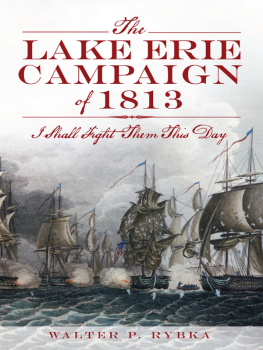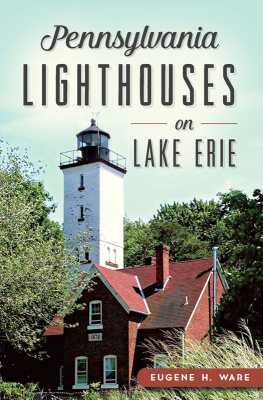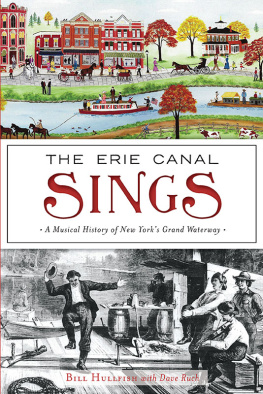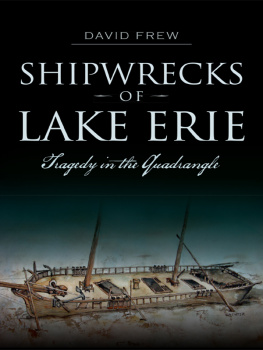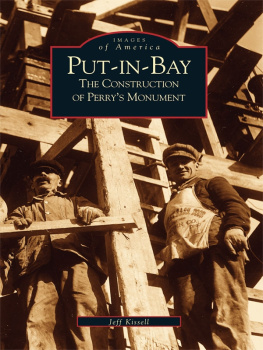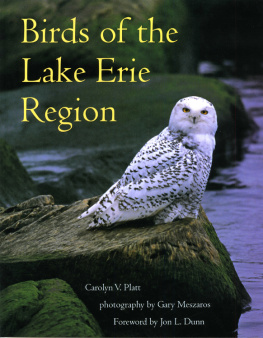
Published by The History Press
Charleston, SC 29403
www.historypress.net
Copyright 2012 by Walter P. Rybka
All rights reserved
Front cover image: This representation of the battle on Lake Erie is respectfully inscribed to Commodore Perry, his officers and gallant crews, by their humble servant James Webster (1815). A contemporary nineteenth-century rendition, this painting captures the dramatic nature of the battle and shows details such as the damage to the Lawrence and Perrys transfer by boat to the Niagara. Few naval battle scenes were painted by eyewitnesses or seamen and are inherently conjectural. Courtesy Library of Congress.
Drawings, diagrams and simplified maps are from authors drawings, enhanced by fonts and sorted appropriate line weights by computer graphic artist Damon Klep.
First published 2012
e-book edition 2012
ISBN 978.1.61423.714.9
print ISBN 978.1.60949.576.7
Library of Congress CIP data applied for.
Notice: The information in this book is true and complete to the best of our knowledge. It is offered without guarantee on the part of the author or The History Press. The author and The History Press disclaim all liability in connection with the use of this book.
All rights reserved. No part of this book may be reproduced or transmitted in any form whatsoever without prior written permission from the publisher except in the case of brief quotations embodied in critical articles and reviews.
CONTENTS
PRELUDE TO BATTLE
Western end of Lake Erie, September 10, 1813, late morning.
Under a hot sun in a clear sky, a light southeast breeze barely ruffles the surface of Lake Erie. On that tranquil blue-green surface, fifteen sailing ships glide at a walking pace in two lines, slowly converging. Six of them fly the Union Jack on White Ensign of the Royal Navy, while nine sail under the Stars and Stripes. On board each vessel, the only sounds are the faint ripple of water at the bows and the tense breathing of men acutely aware that they are standing into danger. All possible preparations having been completed hours ago, the men have nothing to do but stand silent at their stations, contemplating their fate with emotions that can only be fully understood by those who have seen battle. Outwardly calm, showing a grim resolve to do their duty and to not let their shipmates down, each confront a fear of mutilation, death and, perhaps most of all, being found wanting in the trial ahead. As the minutes drag by, the opposing lines draw closer, in that dread silence that precedes a hurricane.
As the heat of the sun increases on the back of his blue woolen jacket, perhaps Oliver Hazard Perry thinks for a moment of the day nearly seven months earlier when he arrived at Erie in a bone-chilling cold that no amount of wool could keep out. All the months of toil since have led up to this moment. Actually, all of the sixteen years since first joining the navy have been preparing Perry for what he confides is the most important day of my life.
It is nearing noon, and white sails draw silently across a blue sky. Fresh paint glistens on the hulls and reflects off the waters. Suddenly, music wafts over the lake. On board the HMS Detroit, the band has struck up Rule Britannia! As the tune wanes, a puff of flame and smoke is followed by the crash of a twenty-four-pounder firing, the discharge of powder followed for several seconds by the distinctive tearing sound of the ball boring through the air. A splash and a plume of spray mark the fall, short of the American ships. In less than three minutes, the heavy gun has been reloaded, and the British gun captain has skillfully made a slight adjustment to the elevation. Again the spout of flame and smoke is seen by the Americans a moment before the sound travels over the still water. Again the sound of round shot tearing air, this time followed by the loud thwock of the ball striking the bulwark planking of the Lawrence. The crash of splintered timber brings with it a short shriek, as the first man dies in the Battle of Lake Erie.
A few months earlier, that man and most of his American shipmates had never heard of Lake Erie. Or if they had, it was only in the context of a wilderness outpost offering backbreaking work, uncharted rock-strewn waters, poor food and the danger of Indian attack. Yet they volunteered. What brought these men to this moment of supreme challenge?
PREFACE
It has been my great privilege to have served as master, or by courtesy Captain, of the current U.S. brig Niagara since 1991, and many are the times that I have envisioned the previous scenario while sailing over the actual battle site in the western part of Lake Erie. Ships decks have served as stages for many of historys most intense dramas, and the Battle of Lake Erie surely qualifies as one of them. In a story so often told, my sole claim on the readers attention is my view of these events through the lens of a seamans eye. It is my hope to impart just enough knowledge of the operational capabilities and constraints of wooden sailing ships in this environment that the reader might gain a better appreciation of the difficulties faced and the options open to the original participants. In this abridged version, the authors illustrations must carry the primary load in conveying the technical side of the story, which is needed to fully understand the courage shown and evaluate the choices made by those who sailed and fought here in 1813.
This book started out with the intention of offering the definitive text on the Battle of Lake Erie, including comparison of differing accounts and in-depth sourcing. Although the inputs and insights for the narrative grew out of two decades of work with the present brig Niagara and the Erie Maritime Museum, the writing of it has been entirely a private project squeezed into the early hours of the morning or the last minutes of the day. As the manuscript grew, I requested review from several professional historians and professors, who generously waded through it and gave me much sound advice (however much they contradicted one another). Publishers were understandably leery of a large work by a first-time author. Combine all of these factors, and the idea of getting a book out for the bicentennial of the War of 1812 was becoming an ever-receding mirage.
What rescued the effort was a request from Dr. William Garvey, himself a professor of history, retired president of Mercyhurst College and founding president of the Jefferson Education Society, Eries think tank. The Jefferson created a subgroup, the Perry 200, for the purpose of making educational events happen for the bicentennial of the War of 1812. Dr. Garvey told me that what was needed for the occasion was a short book, affordable and accessible, to give the average citizen a context for the historic events that originated in Erie and a concise account of the naval campaign. His encouragement, and that of the Perry 200 publications committee, was the reason this book is seeing the light of day.
I also wish to acknowledge the unstinting generosity of Gerard T. Altoff, who over many years as the National Park Service historian at Perrys Victory National Monument shared much of his knowledge and steered me toward much more. Further thanks go to Linda Bolla, volunteer educator at the Erie Maritime Museum, whose assistance in tracking down illustrations was invaluable. Also, my thanks to Penny and Elizabeth, my wife and daughter, for their support and patience through this effort.
SOURCES
As an overview to brief a reader on the war and place the Lake Erie Campaign in context, the first chapter relies heavily on secondary sources. Several authors produced books under the same title (
Next page
